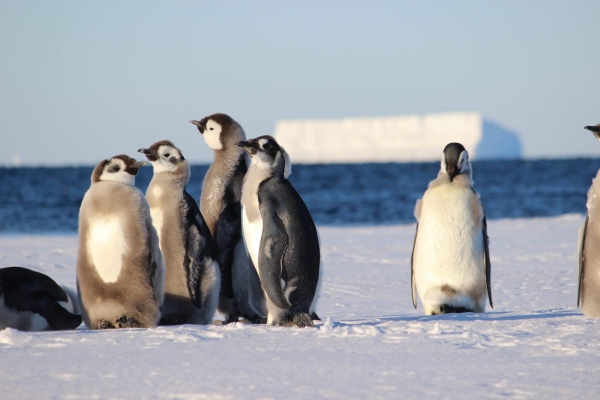Scientists at the Woods Hole Oceanographic Institution (WHOI) and European research institutions are calling for better protections for juvenile emperor penguins, as the U.S. Fish and Wildlife Service considers listing the species under the Endangered Species Act and the Commission for the Conservation of Antarctic Marine Living Resources (CCAMLR) considers expanding the network of Marine Protected Areas (MPAs) in the Southern Ocean.
In one of the few long-term studies of juvenile emperor penguins–and the only study focused on a colony on the Weddell Sea–research published today in Royal Society Open Science found that the young birds spend about 90 percent of their time outside of current and proposed MPAs. The study, which tracked eight penguins with satellite tags over a year, also found that they commonly traveled over 1,200 kilometers (745 miles) beyond the species range defined by the International Union for Conservation of Nature (IUCN), which is based on studies of adult emperor penguins from a few other colonies.
Considered immature until about 4 years of age, juvenile emperor penguins are more vulnerable than adults because they have not fully developed foraging and predator avoidance skills. As climate change reduces sea-ice habitat and opens up new areas of the Southern Ocean to commercial fishing, the researchers conclude that greatly expanded MPAs are crucial to protect this iconic, yet threatened, penguin species at every life stage.
Read More at: Woods Hole Oceanographic Institute
A group of Juvenile emperor penguins at Atka Bay on the sea ice edge ready for their first swim. In four years, they will return to breed, spending much of their time in unprotected areas of the Southern Ocean. (Photo Credit: Daniel P. Zitterbart/ ©Woods Hole Oceanographic Institution)


